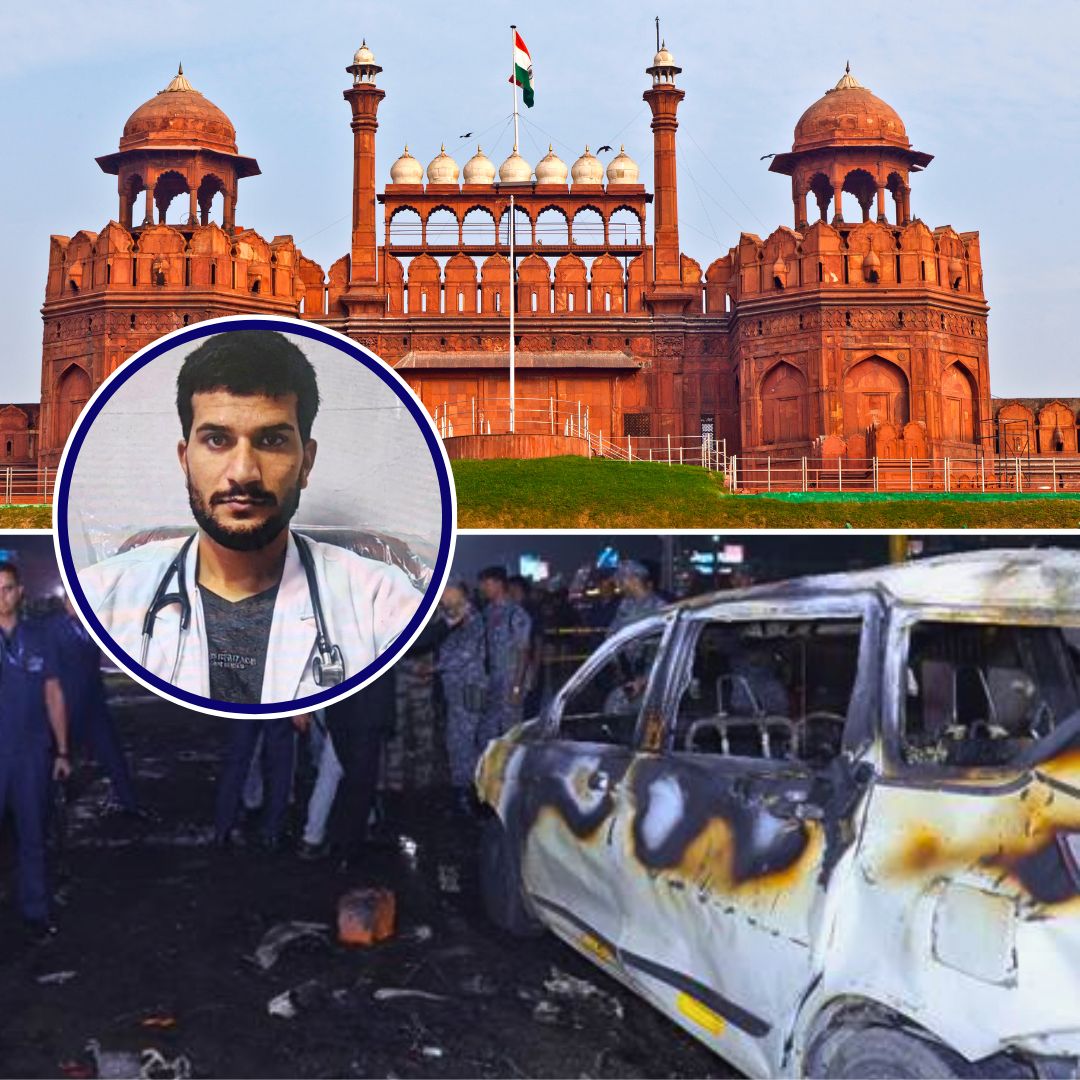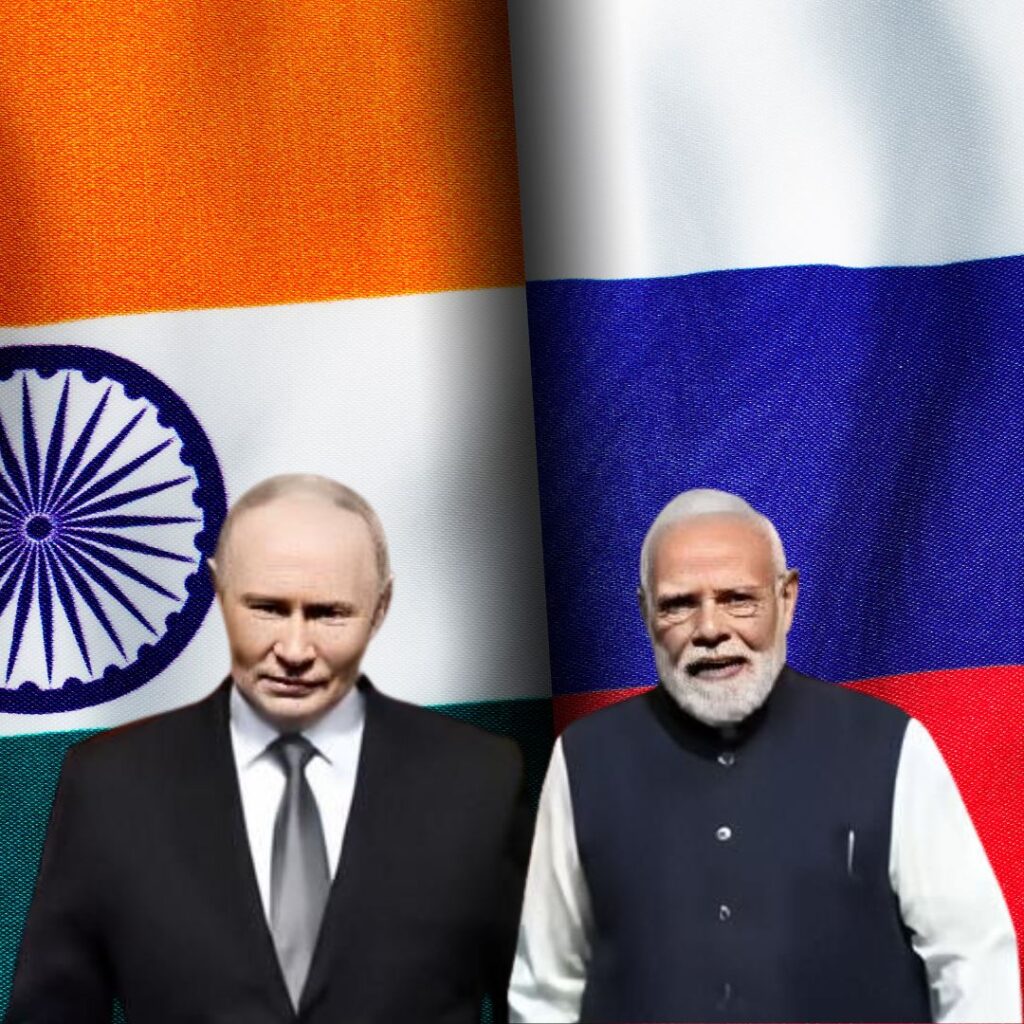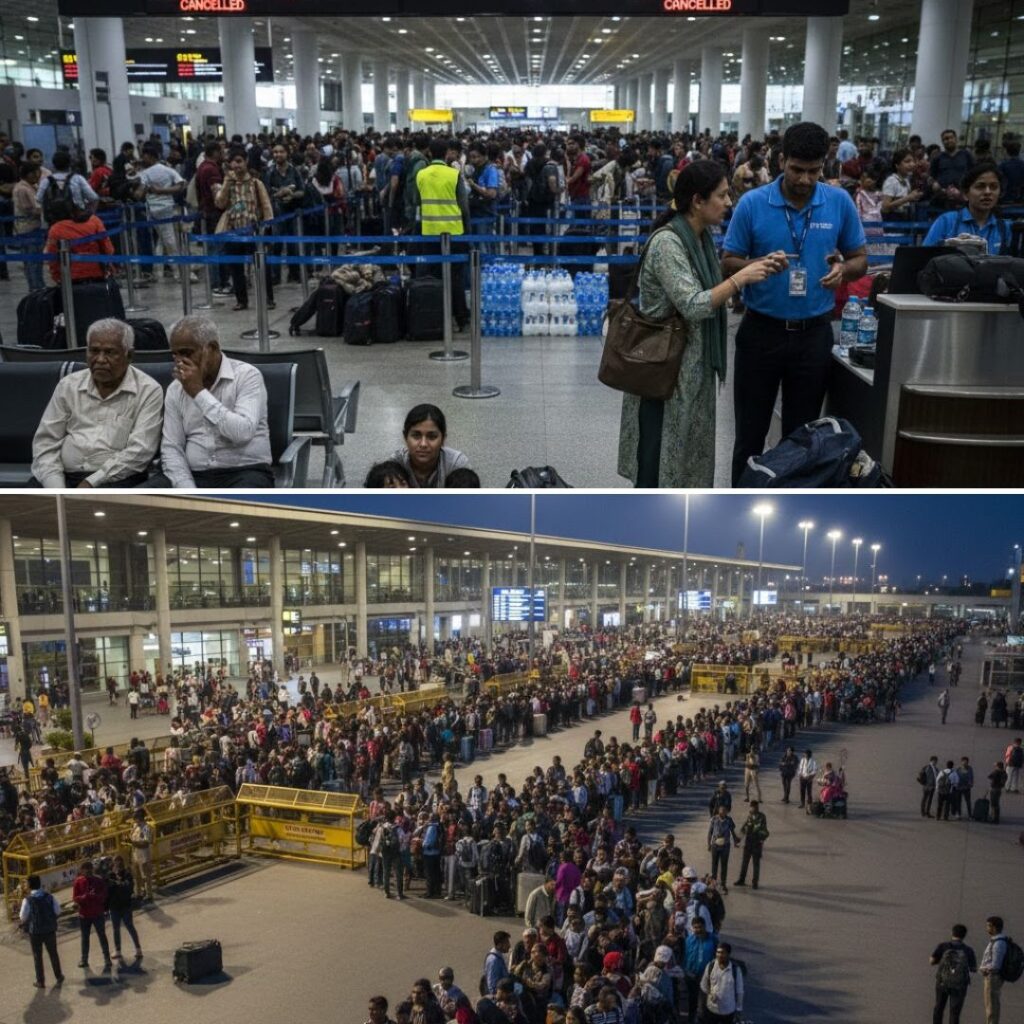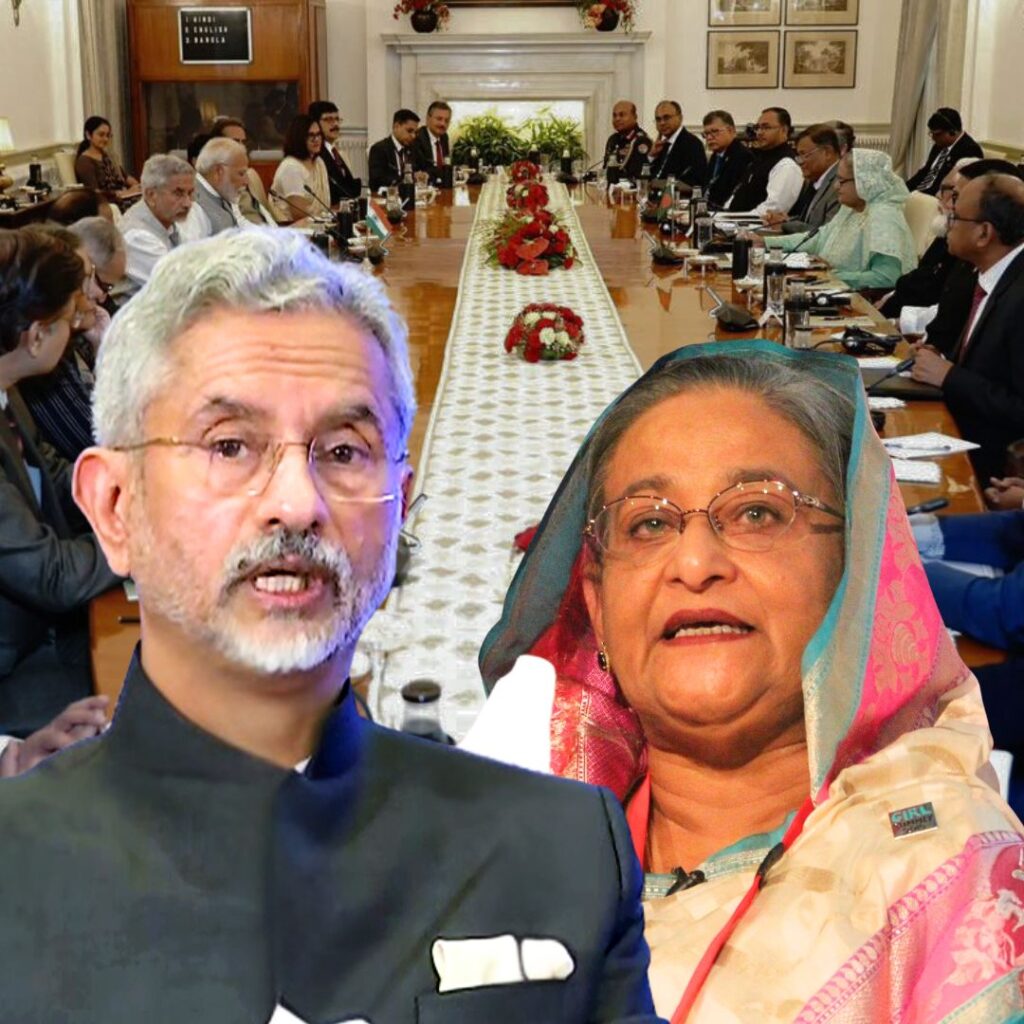Delhi Blast Updates: The National Investigation Agency confirmed on Sunday that the Red Fort blast on 10 November 2025 was a ‘suicide attack’ reportedly orchestrated by ‘deceased driver’ Dr Umar Un Nabi.
Dr Umar Un Nabi, Pulwama based doctor and an assistant professor at Al-Falah Medical College and Hospital, died when his Hyundai i20 exploded, killing at least 11 people near Lal Quila metro station. Authorities confirmed he drove the explosive laden car after conducting DNA matches.
Authorities have arrested Amir Rashid Ali, a local plumber, as a key conspirator in purchasing and preparing the explosive-laden vehicle. The blast was planned over several months, and the area, now under high security, has seen the Lal Quila metro station restored to operation.
Delhi Blast a “Suicide Bombing”
The National Investigation Agency has officially labelled Dr Umar Nabi, a Kashmiri assistant professor, as the suicide bomber behind the recent Red Fort blast that tragically killed 13 people.
This marks a rare case in Delhi’s history, as suicide bombings in the capital have been exceedingly uncommon since the 2005 Delhi serial explosions. The NIA has forensically confirmed his identity, bringing renewed focus on extremism and the evolving threats facing city security.

NIA Probe Red Fort Car Blast
National Investigation Agency (NIA) described Delhi blast as the first instance in which the car was officially labelled a “vehicle-borne IED”. Investigators believe a “white-collar terror network” spanning Jammu & Kashmir, Haryana, and Uttar Pradesh facilitated preparations, including transport and possible communication with foreign sources.
NIA arrested Amir Rashid Ali in whose name the car Hyundai i20, that blew up near the Red Fort killing at least 13 and injuring several, was registered. “Amir had come to Delhi to facilitate the purchase of the car which was eventually used as a vehicle-borne Improvised Explosive Device (IED) to trigger the blast,” the anti-terror agency said in a press release.
The authorities have examined 73 witnesses, seized multiple vehicles for forensic testing, and begun piecing together logistics across several states. Coordination between the Delhi Police’s Special Cell and central agencies remains active as teams pursue new leads and connections.
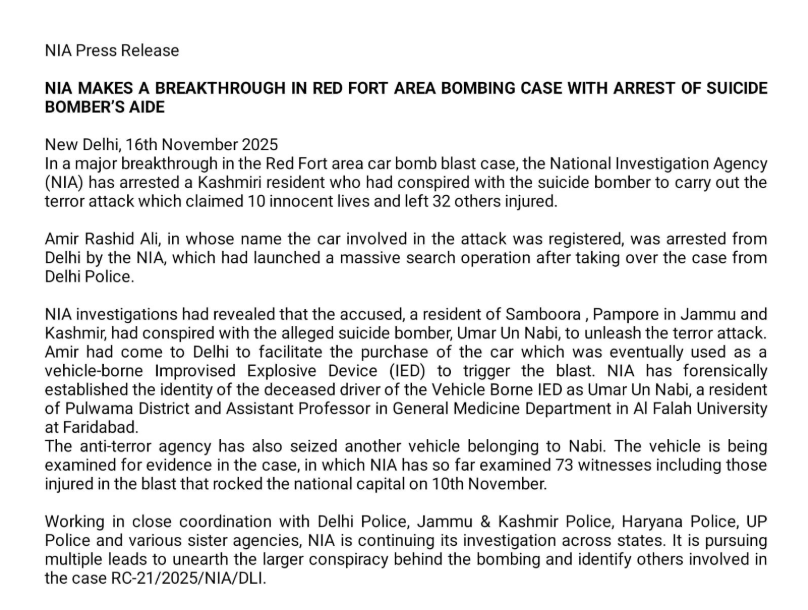
Lal Quila Metro Station Reopens
The Lal Quila Metro Station, which connects commuters to key sites in Old Delhi, has fully reopened after a five-day closure following the Red Fort blast.
The Delhi Metro Rail Corporation announced all gates are now operational, restoring normal service on the Violet Line and easing access for daily travellers and tourists. Authorities took extensive security precautions before resuming operations, and police presence remains heightened in the area in the aftermath of Delhi blast.

Dr Priyanka Sharma Questioned
Jammu and Kashmir’s counter-intelligence team recently questioned Dr Priyanka Sharma, a Rohtak doctor pursuing postgraduate studies in Anantnag, as part of the probe into the “white-collar” terror module linked to the Delhi blast.
Her family has stated she has no connection to terror activities, clarifying she only knew Dr Adeel Ahmed Rather, an accused in the case, as a senior from her college days.
Investigators seized her mobile phone for forensic examination, but have found no evidence of her involvement, and both her family and local authorities have expressed concern over false reports circulating about her accommodation and alleged links.
Delhi Red Fort Car Blast Updates
Here are the major updates and developments in the Delhi car blast:
- The National Investigation Agency (NIA) arrested Amir Rashid Ali, a Kashmiri resident and accomplice of alleged suicide bomber Dr Umar Un Nabi, in Delhi for conspiring and facilitating the purchase of the explosive-laden Hyundai i20.
- Investigators say Umar Un Nabi, an assistant professor from Kashmir, drove the car that exploded near Lal Quila metro station at 6:52pm on 10 November 2025, killing 13 and injuring over 20 people.
- The NIA conducted coordinated raids across Delhi, Jammu and Kashmir, Punjab, Haryana, Uttar Pradesh and Madhya Pradesh to uncover the wider terror network behind the attack.
- Rohtak-based doctor working in Anantnag, Dr Priyanka Sharma, was questioned by Jammu and Kashmir police as part of the probe.
- DNA tests have confirmed Umar’s identity, matching samples from his mother to remains found at the blast site; over 5,000 CCTV cameras tracked the vehicle’s path into Old Delhi.
- Three 9mm cartridges, including two live Army-grade rounds, were recovered near the blast site; police have ruled out their origin from officers on duty and continue to investigate their source.
- The crime module reportedly used “spycraft” tactics to avoid detection, and multiple cars were seized by investigators as they pieced together the terror cell’s logistics.
- Prime Minister Narendra Modi and Defence Minister Rajnath Singh have assured swift justice and pledged that those responsible “will not be spared”.
- Delhi Police have filed a new FIR and stepped up security across central Delhi, conducting verification drives, seizing 34 unattended vehicles, and reinforcing armed presence at sensitive locations.
- Lal Quila metro station, temporarily closed after the blast, has now reopened for commuters; authorities urge the public to remain vigilant and report suspicious activity.
- Investigations have revealed that eight terrorists had planned coordinated blasts in four Indian cities, highlighting the scale of the conspiracy and payments exceeding ₹20 lakh.
Officials’ Statements-Ongoing Response
In an official statement, NIA confirmed the driver’s identity with forensic evidence and stressed the multi-layered nature of the investigation. Police said the car had changed hands several times before being retrofitted for the attack.
Security experts emphasised that multi-agency teams were actively working to uncover any broader criminal conspiracy, with all facts to be shared in due course. The area remains on alert, and officials aim to reassure the public after metro services resumed.


